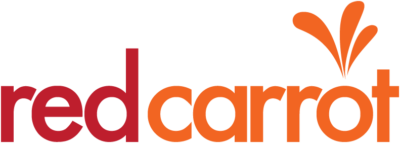
Maximizing ROI on In-Person Events
Introduction
An in-person event provides opportunities to engage with people outside of the day-to-day demands of work to collaborate, build consensus, hear new ideas, celebrate milestones, or complete training. While creating these opportunities is important, in-person events can also require significant investments of funding, time, and other resources. How can organizations be sure they will receive a return on those investments? Use a goal-oriented approach to planning and measuring events.
Set Event Goals for Maximizing Events
We think of events as intangible experiences, but every event can and should have goals that are specific, relevant, and measurable. There is no “one size fits all” approach to events. Conferences, planning retreats, public announcements, webinars, and community outreach events vary according to participants, location, size, budget, length, and more. The goal for each event will be different. Examples of measurable event goals could include:
- Costs: It may be important to stick to a tight budget or try to spend less on an annually reoccurring event than the previous year.
- Time spent: Reducing this can save money and minimize disruptions to schedules.
- Leads generated: For a recruitment event, you could measure the success by the total number of attendees who submitted an application or signed up for information.
- Completion of a task or project: For a leadership summit, a goal could be that attendees agree upon a 10-year vision for the organization.
- Number of trainings completed
- Number of attendees
- Impressions on social media
- Earned media value generated
Maximizing Experience for Event Attendees
When planning an in-person event, the most important thing to remember is that you are creating an experience for the attendees. This helps connect the attendees to the goal of the event. The experience begins when the attendee first hears about the event. From the event announcement to the post-event survey, every touchpoint should be part of a larger experience that connects the attendees to the goal of the event. Communication is essential to enhancing the experience of attendees. Event organizers should plan on sharing the following information in regular communications leading up to the event:
- A draft schedule or brief agenda
- Information about the event venue, including relevant amenities or features
- The event hashtag
- Safety and security measures
- Weather forecasts
- Major events that might disrupt travel (a national championship game or a music festival)
Plan Event Components to Meet Goals for Maximizing Events
Once you’ve set your event goal, you can start thinking about ways to plan each component of the event around that goal to maximize ROI. Almost any aspect of an event can be adjusted to benefit your event goal.
EVENT SPACES:
- Make sure the space is large enough to comfortably seat your audience
- Keep the distances between meeting rooms to a minimum
- Use comfortable lighting and temperature settings for rooms
- Test your audio and video before the event
AGENDA:
- Announce your agenda ahead of the event to generate interest
- Schedule keynote speakers who will spark ideas that complement the event goal
- Prioritize content that is relevant to your audience and event goal
- Keep sessions short enough to maintain the attention of your audience
- Include breaks throughout the day
- Allow time between events for attendees to walk to new locations, use the restroom, or get refreshments
- Include social events where attendees can relax, network, or collaborate together
FOOD:
- Use pre-event communications to collect information about dietary needs
- Plan menus that consider the goals of your event and the preferences of your audience
- Offer a variety of food and beverages
Evaluating In-Person Event Success
After an event, attendees and planners may have their own subjective opinions of how the event went, but how can organizations measure the success of the event? It all comes back to the event’s major goal. Event evaluations should be designed around the original goal of the event.
Post-event surveys are the best way to collect quantitative and qualitative data from attendees. Surveys ask attendees detailed and specific questions about their experience at the event and provide data that can be analyzed to determine whether the goal of the event was met and how efficiently. These surveys can also collect useful follow-up information, including contact details of participants or opportunities for attendees to share testimonials that can be used in marketing materials.
The data collected from each event will not only allow your organization to determine whether or not you have achieved your event goal, it will also provide insights that will help you better plan and improve future in-person events.
